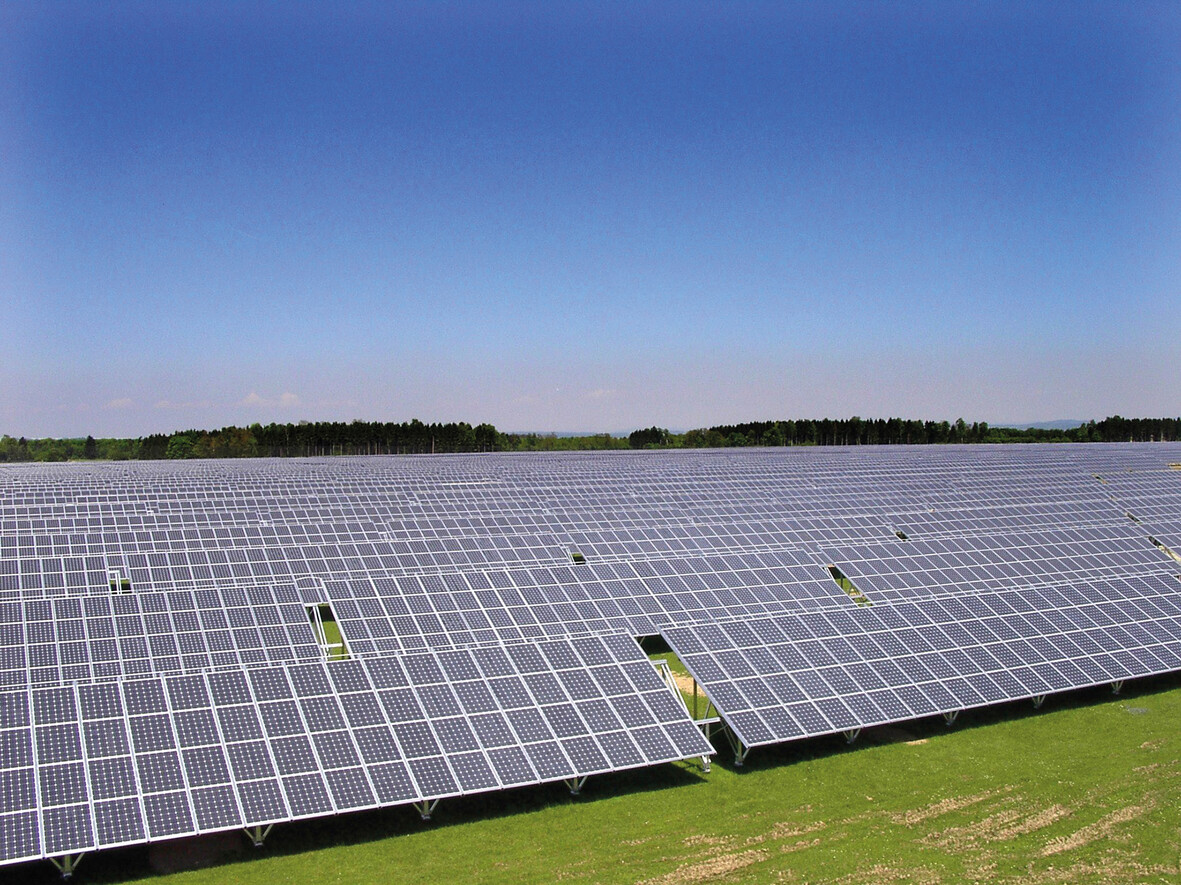Press Release #4
European Photovoltaics Industry is Booming – Fraunhofer ISE Collaborates in Andalusian 5-Gigawatt Project
Next to wind energy, photovoltaics is the main pillar of the energy transition. While Germany and Europe in general are still leading when it comes to the research and development of solar cells and modules, the last ten years have seen the transfer of production to Asia. As a consequence, Europe risked losing its technological sovereignty and independence. This trend is starting to be reversed though. One reason is that the share of transport costs in the price of imported modules has increased, another that buyers are placing more value on sustainable production criteria than they did just a few years ago. Regional production has become affordable. In Spain, a start-up company called Greenland has embarked on setting up a highly-automated photovoltaic production line with an output of 5 gigawatts per year. The company uses a vertical integration strategy, which means that they cover the entire value creation chain, from the raw material to wafers, solar cells to solar modules. Fraunhofer Institute for Solar Energy Systems ISE provides consultation for the project. This covers factory planning, technical support as well as collaboration in the development of advanced cell technology. To ensure that the project can be successful within this highly competitive global market, state-of-the-art, fully integrated, industry 4.0 production technology will be employed. Bosch Rexroth will provide instrumental support with factory planning and construction.

In 2019, the German Mechanical Engineering Industry Association, VDMA, commissioned Fraunhofer ISE with a study on the competitiveness of the European PV industry. One of the main criteria for being competitive and achieving low manufacturing costs with local/regional production within Europe identified by the Fraunhofer ISE team was that factories have to be a certain size right from the start. Another significant finding of the study was that currently low production costs of less than 20 eurocents per Watt peak mean that the share of transport costs for modules and components is at almost 10 % now. This shows that local production close to the target market and a local value creation chain are essential for making European PV production profitable and independent from imports. Furthermore, with a fair CO2 emissions pricing system, modules produced in Europe will be able to benefit from the considerably lower carbon footprint compared to imports from Asia thanks to the European electricity mix.
Andalusia capitalizes on the benefits of regional PV production
These arguments as well as the favorable political conditions created by the EU Green Deal have led the province of Andalusia and the city of Seville to expand their regional PV production. Against this backdrop, they also support the creation of a fully integrated PV factory within the free trade zone in the port of Seville. The new company Greenland Gigafactory was founded with the objective of spending the next two years setting up such a factory with a production capacity of 5 GW per year. “We are delighted that Greenland has chosen us as their partner for selecting the starting technology,” comments Dr. Jochen Rentsch, Head of Department Production Technology: Surfaces and Interfaces at Fraunhofer ISE, and he adds: “We will also support Greenland through the ramp-up and further technological development.”
Greenland has chosen state-of-the-art technology because this is essential for setting up a 5-GW production facility in such a short space of time. The technology centers around M10 monocrystalline silicon wafers for passivated emitter and rear contact (PERC) solar cells. These are integrated into semi- or triple-junction cell modules with a minimum output of 540 W and a multi-busbar design.
Both the solar modules and the production facility itself will be state-of-the-art. As Thomas Fechner, Head of New Business at Bosch Rexroth, explains,“we have partnered with Greenland Gigafactory and Fraunhofer ISE to create a highly innovative, fully flexible and completely networked solar cell production facility of the future to serve the promising European market.”
Prof. Andreas Bett, Fraunhofer ISE’s institute director, sees in this project another sign that European companies and investors have recognized that now is the time to build on technology leadership and bring industrial sovereignty in the area of solar energy back to Europe. “European research centers are developing some of the most advanced technologies in the world. These include tandem solar cells for top efficiency values which reduce both the required surface area and material consumption, as well as sustainable production technologies based on the principles of the circular economy and recycling. Funding of and investments into these key technologies at EU-level will help consolidate the leadership position of Europe in these key strategic technologies.”
Last modified: